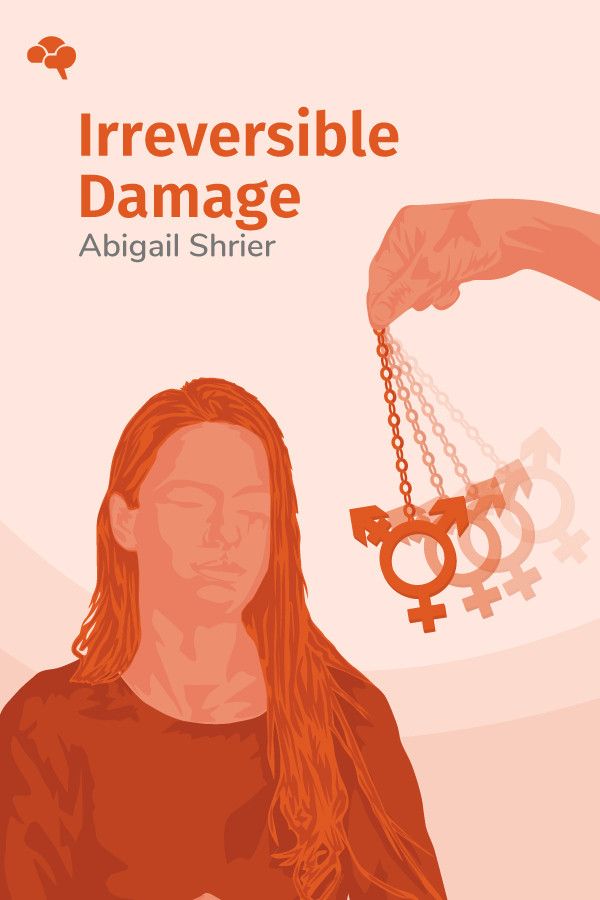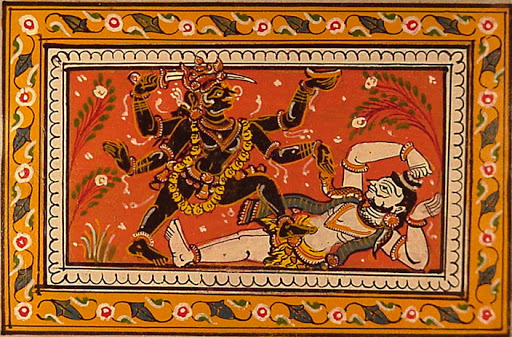- Visitor:31
- Published on:
Mrityu, Vatsalya and Andanda Marga
Till we believe that the source of happiness is in the objects of this world that we deal with, the endless Karmic cycle would continue. The real happiness lies beyond ego and its actual form is the last word Ananda of “Sat-Chit-Ananda”- the eternal bliss.

1. Mrityu and Vatsalya

Old age, sickness and Death- in order to get free from these three, Siddhartha chose asceticism. Did he actually get any path towards freedom? Let us keep the debate for another day. However, it can’t be denied that this body- which is not eternal and capricious, left him thinking. From mortality to eternity, the journey began in search of the “Sat” or eternal or absolute- the imperishable!

(One who is born would one day definitely face the contrary phenomenon)
This is irrespective of how noble and great we might be, death never spares us, from a nanoscale-sized germ to the supreme Vishnu or Brahma, the creators, the Lords of the Universe! There is no one to give the company when one is driven towards the last journey of breath in this mysterious and complex course.
Baby Achilles was drowned upside down by his mother Thetis in the water of Styx, holding his heel. This is to make him immortal… like Iron Man. But, what to say! The area of the heel remained vulnerable to death as it was in touch with the mother’s hold. And in this heel, as per the later Greek and Roman drama and poetry and long after Homer’s Iliad, the arrow of destiny would get stuck and make Achilles die!

Again, remember the tale of Duryodhana? Before the war, Gandhari, the mother asked him to come undressed and delivered him with the iron-like armor wishing “Break a leg!”. However, the guy covered his thighs because of his prestige in front of the mother. So, his last breath was lying helplessly with a broken femur!

Song of Rabindranath Tagore.
Translation:
Flows the ceaseless life-stream, beams the sun, stars the moon, the
Spring arrives in the forest in varied hues…. …There exists pain, exists death, and the ache of separation burns one (Translated by Ratna De)
In various battle-oriented stories and accounts of Karbala, patrimonial love has a great part. Muhammad kissed the whole body of his grandson Imam Hussain, in his childhood. A prophecy was there that harming any human body part touched by the messenger’s affection is impossible. So far so good. However, as the slayer Sinan ibn Anas failed to kill him after much effort, Hussain himself revealed that “My whole body would remain unscathed, except the neck. Security Not My Problem… !! The prophet hasn’t kissed there. Don’t be at the end of your rope. Sinan, hit the dagger on my neck. Then only you can kill me”.
Which of these myths have come from where and influenced the others is also not our present concern. The thing to see here is the approach of those narratives- the affection towards own children (Vatsalya Rasa) presented through these legends. How much might be we are fond of and look after our kiddies- oil the care of love on their body- would never make them immortal. They will not achieve the ability to exist forever. And, the mythologies have never let us forget these simple anomalies. Birth and death- both will be there. Mrityu is inevitable.
2. The journey of Ananda Marga

Buddha calls sorrow to be true, but not grief. Again, Vedanta declares sukha (happiness outside, dependant on other objects) to be false but not ananda (happiness inside). There is a path from sorrow to joy. This is what I am addressing here as Ananda Marga. And, for this we have to be burdenless.
The human mind gets stirred up by desires that are still unfulfilled, breeding sorrow and unable to satisfy the inner ego. The Hedonic view, a popular Western approach dealing with well-being and happiness, states that pleasure is just an intrinsic good and can be retrieved by connecting with the world. In this context, another leading philosophy from the West is the Eudaimonic approach that claims happiness to be the ultimate and highest state as per the lives lived- virtually or with good intentions.

As per the Upanishads, the origin of selfless action is happiness (Ananda). Most of the art forms created through human hands have their root cause in either happiness or sadness that creates waves in their mind, to recreate the emotions .

For example, the 10,000 years old Bhimbetka rock shelters of Madhya Pradesh, India, featuring prehistoric cave paintings shows the reflection of human minds while hunting and dancing and their first response towards watching animals. Again, the poetries of Kalidasa shining the fervency within the poet’s mind have the search for creation latent inside it. Not only just necessity, but happiness is also the central cause behind these types of selfless Karma or action.

The Gyan Marg or path of knowledge and Karma Marg or the path of action are equally appreciated by any Advaita Vedantist. Here, no differentiation can be done between a Brahmin or teacher and a Shudura or service-man. Remember, Vikarna like a Dvaitavadi (dualist), claims Pandavas to be winning because of God on their side, but himself experiences Krishna or truth present in both sides of the army at Kurukshetra war (the absolute truth at one side, and his personal truth/duty at the other) when he faced and argued with Bhima, his opponent. Truth can manifest in any form.
While searching inside, a Vedantist understands the objects to be neutral in nature by themselves. Nothing as binary true or false is there in the interpretation of anything or any idea. We put our bias as per our conditioning, situations and what we go through. Till we believe that the source of happiness is in the objects of this world that we deal with, the endless Karmic cycle would continue. The real happiness lies beyond ego and its actual form is the last word Ananda of “Sat-Chit-Ananda”– the eternal bliss.

स ब्रह्मयोगयुक्तात्मा सुखमक्षयमश्रुते । 15.21।।
bahya-sparsheshvasaktātmā vindatyātmani yat sukham sa brahma-yoga-yuktātmā sukham akshayam ashnute (Bhagavad Gita -5.21||
(People unattached to external sensual pleasures identify the divine within. Establishing the connection with God through Yoga, everlasting happiness is experienced.)
A Dvaitavadi thinks that Jeevantma or my soul is different from Paramatma or God. From our daily practical understanding through our senses, we can definitely say that we are atleast not God. If we deny God, at least we can accept the Prakriti or nature- that makes me feel different from my surroundings. Here, a Vishishtadvaitavadi (Qualified Non-dualism) in particular, would argue that Jeevantma comes from Paramatma. It is connected to Paramatma and one day would get assimilated to Paramatma.

In line with this context, Alan Watts highlights the example of a bottle full of ink thrown at a wall. The central part of the smash tends to be most dense, while it is thin towards the edge where it generates more complex patterns. Similarly, common people think Big Bang or anyway, the origin of the universe, took place a long time ago and own self to be distinct from the other parts of the cosmos. Here, our view about our own self can be compared with the minute negligible wavy motion that generates out of the shore of the ink plot, similar to everything expanding with Time after Big Bang. The wave will be awake as it would realize its true nature as the ocean. In Indian terms, it is called “tat tvam asi” that states that everything visible is inseparable from what they are in reality.


তুমি হে মহাসুন্দর, জীবননাথ/
শোকে দুখে তোমারি বাণী/
জাগরণ দিবে আনি/
নাশিবে দারুণ অবসাদ |
Aanondo tumi swaami, mongalo tumi, Tumi hey mahasundar, jibanonaatho. Shoke dukhe tomari baani jaagorano dibe aani, Naashibe daaruno abosad. (Song of Rabindranath Tagore)
(Oh happiness, you are the Lord, the bliss/You are the all-beautiful,/Sustainer of the life/In every grief and sorrow, your message would make us rise/Destroying the intense exhaustion)
Modern science will also not deny that our body is made up of the constituents of nature and is a part of the surrounding. One day it will get dissolved in nature. Now put Jeevatma in the place of body and God in the place of nature. An Advaitavadi will add up that all the assumptions are valid. There is nothing called the ‘surrounding”. It is just an illusion due to Maya. There is only one Paramatma- a single consciousness appearing with different identities because of the mistake by Maya. According to Rishi Aurobindo, it is mainly due to the power of “apprehension”, the part of the Supramental Truth or consciousness, that generates the difference between knowledge, knower and known.
Without question! Go for any of these ideas or any other beyond these from any Indian schools of thought that you think suits you… that gives you Ananda, brings you pleasure… This is Ananda Marga. Otherwise, can come up with any new ideas of the same kind from your own! I don’t think any Hindu God representing and holding post is any of these schools of thought, other than what you have chosen, will come forward to curse you for this!
Content courtesy:
Various Facebook posts and comments, mainly inspired by Joydeep Basu’s writings
Originally published at bharatexaminer.com
Center for Indic Studies is now on Telegram. For regular updates on Indic Varta, Indic Talks and Indic Courses at CIS, please subscribe to our telegram channel !
- 15 min read
- 0
- 0










